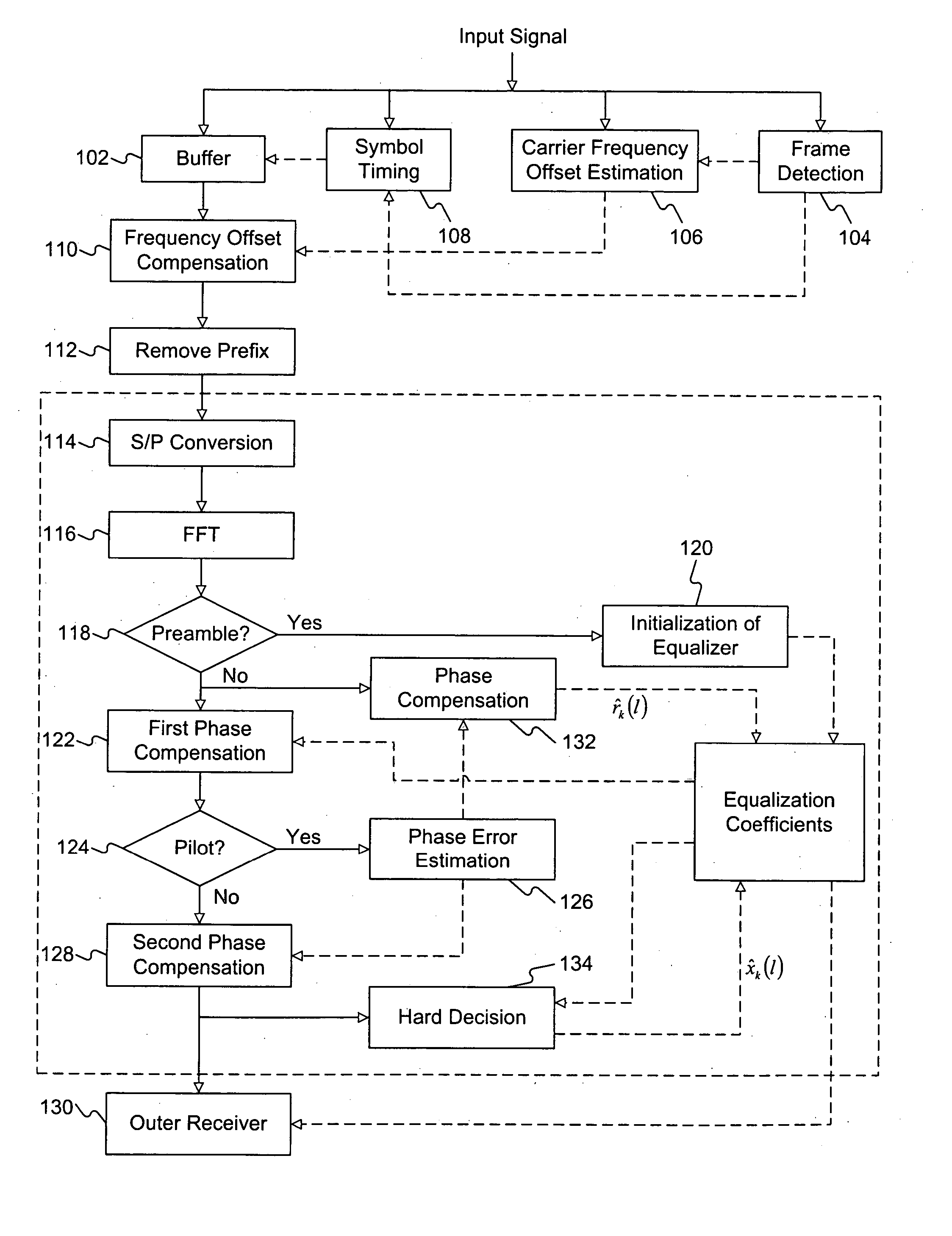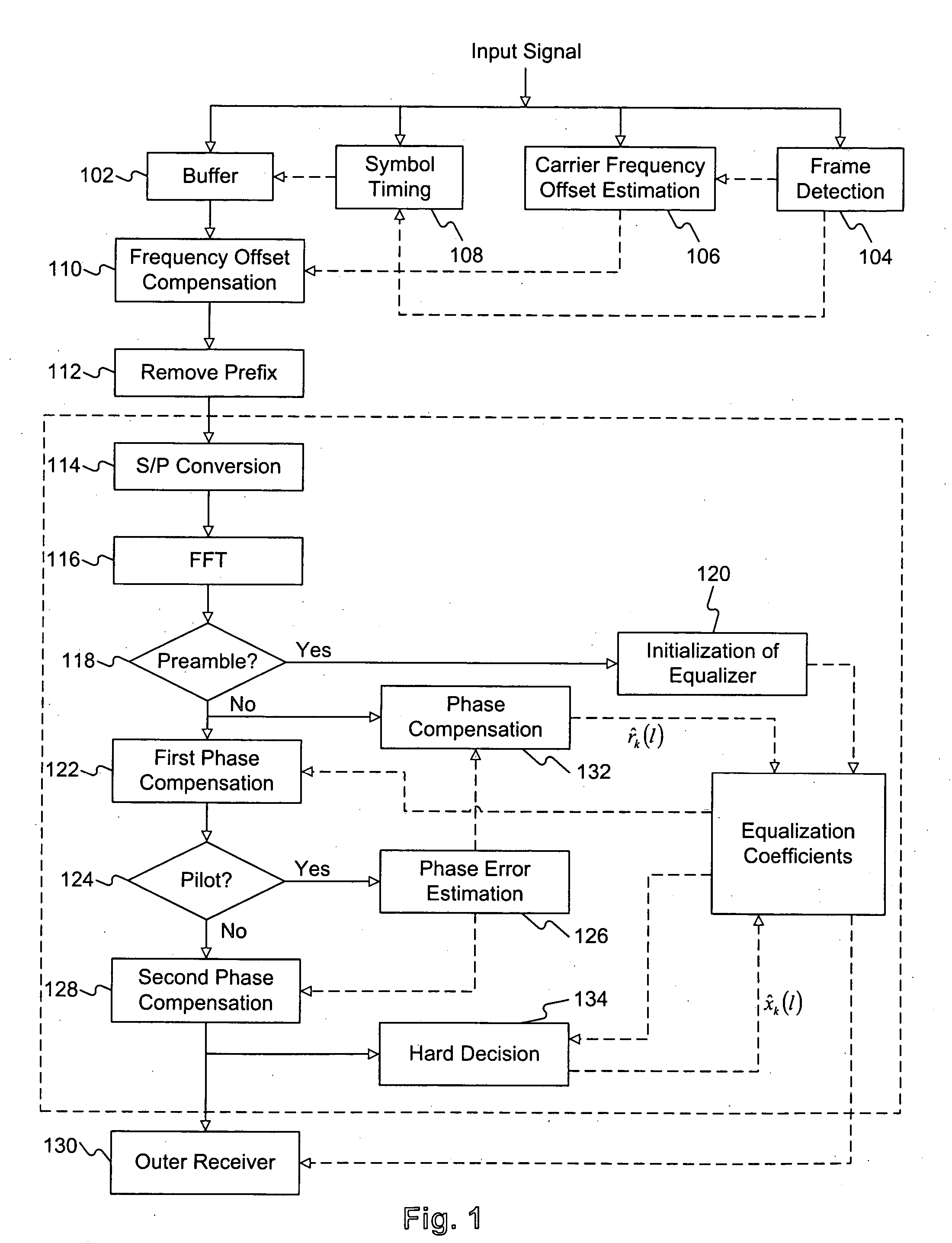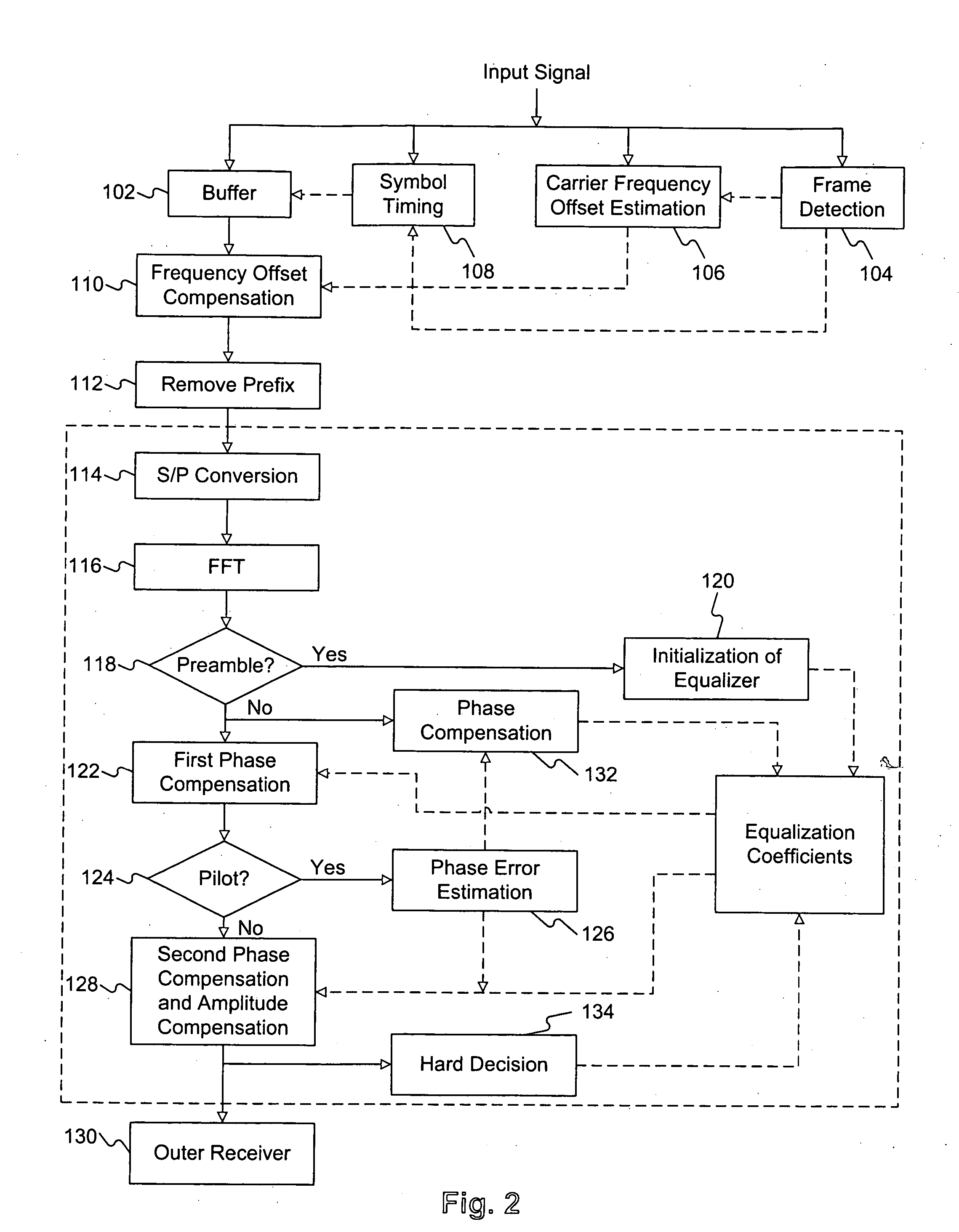Method of equalization in an OFDM system
a frequency domain equalizer and frequency division multiplexing technology, applied in frequency-division multiplexing, baseband system details, pulse technique, etc., can solve the problems of phase distortion and ici, limit the channel capacity of a wireless system, and loss of orthogonality between intercarriers
- Summary
- Abstract
- Description
- Claims
- Application Information
AI Technical Summary
Benefits of technology
Problems solved by technology
Method used
Image
Examples
first embodiment
[0020]FIG. 1 is a flowchart showing the data processing steps of the receiver, wherein the equalizer of the receiver utilizes the equalization method consistent with the present invention. For illustration purposes, the solid arrows in FIG. 1 indicate the flow of the signal or data, and the dashed arrows indicate that the result or parameter of the previous step is used in the next step.
[0021] The equalizer has stored therein equalization coefficients, which include at least one phase compensation factor and at least one amplitude compensation factor. A box labeled “Equalization Coefficients” (not numbered) is shown in FIG. 1 for illustration purposes. An arrow pointing to the “Equalization Coefficients” box indicates that a step or process updates at least one of the coefficients, while an arrow pointing away from the “Equalization Coefficients” box indicates that at least one of the coefficients stored in the equalizer is used for a step or a process.
[0022] Referring to FIG. 1, a...
second embodiment
[0049] Alternatively, FIG. 2 shows an equalization method according to the present invention, wherein the equalizer of the receiver compensates for both at least one amplitude distortion and at least one phase distortion. Similar steps are labeled with the same reference numerals as those shown in FIG. 1.
[0050] Referring to FIG. 2, using the second phase compensation factor obtained at step 126 and the at least one amplitude compensation factor stored in the equalizer, the data symbols of an OFDM symbol are compensated for both the at least one second amplitude distortion and the at least one second phase distortion at step 128, as compared to the compensation for only the at least one second phase distortion at step 128 in the first embodiment as shown in FIG. 1. After step 128 of both amplitude and phase compensations, the data symbols bearing the at least one compensated amplitude are used for hard decision at step 134, as well as outputted to the outer receiver at step 130.
[005...
PUM
 Login to View More
Login to View More Abstract
Description
Claims
Application Information
 Login to View More
Login to View More - R&D
- Intellectual Property
- Life Sciences
- Materials
- Tech Scout
- Unparalleled Data Quality
- Higher Quality Content
- 60% Fewer Hallucinations
Browse by: Latest US Patents, China's latest patents, Technical Efficacy Thesaurus, Application Domain, Technology Topic, Popular Technical Reports.
© 2025 PatSnap. All rights reserved.Legal|Privacy policy|Modern Slavery Act Transparency Statement|Sitemap|About US| Contact US: help@patsnap.com



